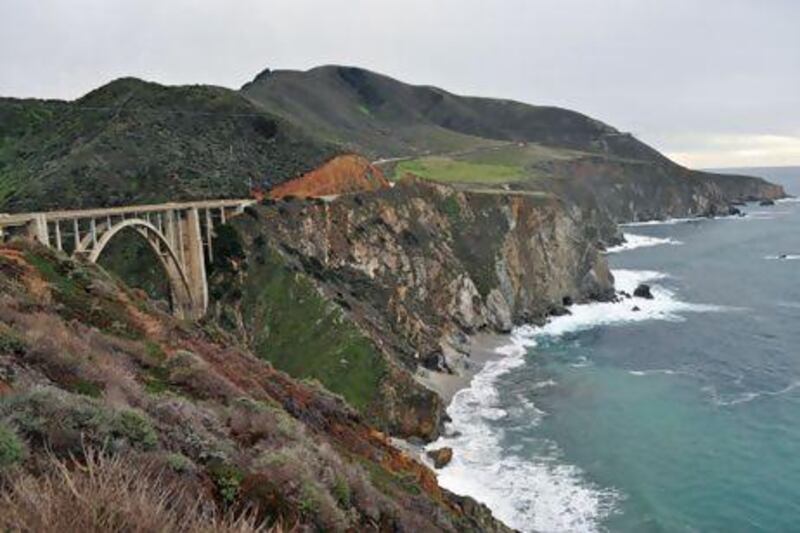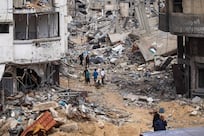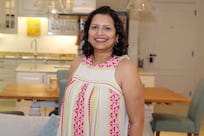"Are these people working or just on Facebook?" I can't resist a joke at the earnestness of it all as we walk around one of the huge, open-plan offices at the California HQ of the world's most successful social networking site. "That's Mark Zuckerberg's desk," says Feng, a Chinese research scientist we met at a party a few days ago. "He's not around today though." We'd already driven past the multi-billionaire Facebook founder's house in Los Altos Hills on the way to a hackathon the previous evening - perhaps he had a long night.
We're on a self-styled tour of Silicon Valley as part of a longer trip to the region, but as guided tours that actually take you inside such global bastions as Facebook, Google and Apple are oddly impossible (who wouldn't want to go to the place where status updates, internet searches and Steve Jobs were made?), we've had to rely on our own "network". This means turning up virtually on a whim in Menlo Park, a flat, nondescript corner of "The Valley", Silicon Valley to outsiders.
First impressions are uninspiring. Facebook's current "campus" is the giant but dull-looking former offices of Sun Microsystems - though there's a giant "like" symbol outside, and, half-amusingly, it's at the junction of Willow Road and Hacker Way. Yes, really. Inside reception, we sign in via a Facebook page presented on a touch-screen, though "pinging" our contact doesn't work and security are forced to rely on the old fashioned telephone to get through to him.
Some 4,000 employees work here in what feels like social media's Disneyland, strolling down deliberately graffiti-scrawled and spraypainted white corridors, helping themselves to free Philz coffee, healthy drinks and snacks, taking Mac accessories from vending machines, stopping to have their laptops tuned up and, presumably, at some point having meetings in rooms named from a combination of themes, usually involving computer terminology and a song, film or foodstuff. Think "Puff, the magic drag-n-drop" and "We didn't start the Firefox." Enough already. Even the company's intranet is built around a Facebook interface, displayed in hallways and through which staff can be located. "What if there was a staff member who wasn't on Facebook?" I ask Feng; he looks at me strangely.
"Done is better than perfect" is an oft-seen motto around here, so after a less than impressive lunch in what feels like the canteen of an international university, we continue to our next stop, Apple, where another acquaintance takes us for lunch and a show-round. The home of the iPhone, iPad, iPod and all the other i- gadgets the late Steve Jobs made us want to buy is in a similarly dull location in Cupertino, near Mountain View, itself a bit of a misnomer. Yet it, too, calls itself a campus and has a preposterously-named address, 1 Infinite Loop. I'm told the name was inspired by a programming concept; at any rate, the taxi driver doesn't blink when we ask to go there.
Inside Apple, the company's hub seems to be its vast and enviable staff restaurant, which is packed with geeks loading up on organic smoothies, imaginative vegetarian main courses, sushi and Starbucks coffee. Only the coffee is free, and Jobs' reputation for meanness seems oddly appreciated by staff, who are all dressed down and look wonderfully individual. "The only people you see in suits are those coming for interviews", says our British contact, whose job designing a part of the iPhone cover sounds incredibly dull (though the sight of Jonathan Ive, the company's chief industrial designer, walking across the courtyard seems to create a frisson of excitement).
We're met outside by Khalid Al Ameri, the first Emirati to study for an MBA at Stanford, who takes us to the university campus. It's grand but its hulking mass of Spanish mission-style sandstone buildings strike me as too perfect, with no sense of history. Over lunch at Stanford Mall, Al Ameri, who says the thing he most likes about California is the quality of life, impresses us with his approach and determination "to experience life for everything it's worth."
Back on the road, we're taken to Google HQ by Junling, a Chinese data scientist who's just resigned from PayPal and is trying to get into Ebay. Google's "campus" is genuinely attractive, with angular buildings surrounding small fruit and vegetable gardens and multicoloured bicycles which can be used to tour the place. LinkedIn, by contrast, situated as it is on an isolated industrial estate, seems as un- linked-in as it's possible to be (Twitter, for example, is located in downtown San Francisco). Yet Junling, who tells us casually over dim sum that her father was sent to a Communist labour camp when she was seven, never to be seen again, is a convert to life in "The Valley". Though she says she could now earn more money working in China, she says she wouldn't swap the freedom she enjoys here for anything. Rather surprisingly, as someone who's escaped a cult-like, follow-the-leader society, Junling admits to being a devotee of Steve Jobs and says she took flowers to his home when he died. "Can you take us to his house?" I ask, and she needs no encouragement. Plugging the address, 2101 Waverley Street Palo Alto, into her iPhone, we're there within five minutes.
The Jobs house, still lived in by his family, is a lovely old farmhouse-style property on one of the most expensive streets in the area: peaceful, tree-lined, quietly historic. A woman who looks like his widow, Laurene Powell, stands in the driveway next to a Volkswagen Jetta, and says hello. A group of tourists are taking pictures at the end of the front garden, but she doesn't seem to mind, and there's no tall fence or hedge to keep visitors out. Through the website Airbnb, we rent a room for the night in a large, airy, spotlessly clean house on the same street. It's owned by a husband-and-wife startup team, and our room contains a bookshelf with titles such as The First $20m is the Hardest, Everything is Miscellaneous and The Innovator's Manifesto. It's a fascinating insight into life here. The owner, Nathan, tells us that the street is full of millionaires (the average house price is $1.5m; Dh5.5m) but that the whole community is deliberately open and that displays of ostentation are frowned upon. "The big players like to be treated like normal people. They are glad you talk to them."
Having said that, Nathan then takes us for a walk in the scenic Foothills Park, from where we can see the whole "Valley", from San Jose up to San Francisco, their lights twinkling at dusk. This, Nathan says, is where an emperor-like Mark Zuckerberg used to bring potential hires, telling them "one day all of this will be yours."
We go for dinner in Jin Sho, pescatarian Steve Jobs' favourite sushi restaurant, on the delightfully low-key California Avenue. The restaurant is small, classy and laid-back, and the food is reasonably priced, served from an open kitchen without fuss. A couple of kilometres away, Stanford Avenue is much smarter and livelier, with dozens of restaurants, bars and coffee shops. A cocktail party is going on at the smart Garden Court Hotel, and in a branch of Peet's Coffee and Tea, a San Francisco brand selling ferociously strong but delicious coffee, we sit among countless "entrepreneurs", each with their silver MacBooks and some in meetings or on the phone, catching snatches of discussions about "building online platforms", "drilling down" and "value propositions."
For both geeks and ordinary tourists, a visit to the Computer History Museum, located next to a motorway in Mountain View, charts 2,000 years of computing; exhibits include hundreds of items from early calculating devices to analog computers, computer games, and, finally, the internet. The enormous iMacs from just 10 years ago seem shockingly outdated; an excellent guided tour puts a human face on it all. Inspired, we head to lunch at Buck's of Woodside, a diner where Hotmail and Tesla were reportedly founded. Over macaroni cheese and sweet potato fries with blue cheese dip, we admire the wacky mobiles hanging from the ceiling, but the only people we see are middle-aged groups and couples, rather than IT people hammering out the next phase of the digital revolution.
A lively farmer's market is taking place in the car park of Mountain View Caltrain station, from where - after one last cup of "Philtered Soul" coffee from Philz coffee - we board one of the slow, hulking, 30-year old double-decker trains back into San Francisco. Given the economic importance of the area, it's surprisingly un- high-tech, and takes over an hour each way.
San Francisco, a city dominated by hills, is surprisingly also dominated by cyclists, as we discover on a small guided tour with Streets of San Francisco Bike Tours, a company based out of an industrial container in the trendy Hayes Valley area. Our guide, Beebee, who is also a part-time yoga teacher, takes us on a three-hour tour via Alamo Square Park and the "Painted Ladies", Golden Gate Park, Haight, Castro and Mission. Her best advice is "don't get doored" - that is, steer clear of parked cars. To avoid the hills, part of the route follows "The Wiggle", a bike route specially designed to avoid steep slopes. At every junction, scared looking motorists, no doubt terrified of lawsuits, look us straight in the eye and almost always give way.
Through the tour, which describes San Francisco's founding in 1776 and the gold rush of the 1800s, it's possible to get a sense of the entrepreneurial spirit which has carried on until today. "In many ways, with Silicon Valley, it's still a gold rush town," says Daniel Watson-Weller, owner of Streets of San Francisco. Equally, as we explore gorgeous old areas like Chinatown and North Beach, with their 1920s brick facades, old shopfronts and wide, quiet streets still intact, it's uncannily possible to feel that you're in the Old West.
That relaxed parochialism at the heart of this, one of the world's most advanced cities, is also in evidence when we have dinner that night at the Fog Harbour Fish House on Pier 39. I expected a tourist trap, but instead the dining room is half-filled with locals enjoying dinner and conversation. It's crab season, and they're caught under the Golden Gate Bridge, which we can see from our table, so we order half a spicy crab, seared sesame tuna and swordfish from Hawaii. It's all delicious especially the crab, which is the tastiest and meatiest I've ever seen. Further along the Embarcardero there are trendier places, such as the all-organic The Plant, and Slanted Door, a highly rated Vietnemese restaurant worth visiting for its interiors as much as the food.
Our first hotel, the Orchard Garden Hotel on Bush St, is California's first "green" hotel, but we like it more for its location in a tiny French quarter between the Financial District and Chinatown. Most of the downtown area is within walking distance, and its no-fuss philosophy wins us over. For the best views in town, however, the newly renovated Mandarin Oriental is unbeatable. Our room on the 44th floor has panoramic views across the city to the bay and the Golden Gate Bridge.
It's across the Bay Bridge that we set off the next day en-route to Yosemite National Park. Our car, a brand new Infiniti GX35, is delivered to our door by Hertz and we're amazed at how quickly we're out of the city. Using the built-in Satnav, we glide our way east, and in two hours we're crossing the central plains with the Sierra Nevada looming ahead. We stop and have dinner in Mariposa, a historic mining town of 2,000 people, before continuing to Tenaya Lodge, an altogether more modern, but luxurious, property set in woodland near a settlement called Fish Camp.
The next morning we're at the Mariposa Grove entrance at opening time and coast along the lonely Wawona Road for an hour, glimpsing dense, isolated woodland on high sierras and patchy granite outcrops. As I recall the efforts of John Muir, the Scottish-born American naturalist who devoted most of his life to preserving this landscape, I become increasingly moved, as I was when I first visited 10 years ago, both at the beauty of it and about the fact that still to this day, Congress continues to offer staunch protection to a place it recognises as beneficial to the soul. Everything is so clean and so dramatic it looks like a film set. As we stop to view El Capitan and the rest of Yosemite Valley, I can't better Muir's conclusion that this is "by far the grandest of all the special temples of nature I was ever permitted to enter".
And nature is the theme for the next few days, as we drive south along the daintily pretty and still surprisingly unspoilt coast road from Sonoma to San Francisco, stopping for fresh oysters at Tomales Bay in Marin county and continuing south over the Golden Gate Bridge to Land's End and the Cliff House restaurant, now a mostly modern structure but a favourite of Mark Twain some 150 years ago. Lunch is scallops and Ahi tuna, bouillabaise, cod and truffle fries to die for.
From the terrace there's a striking panorama - especially on a windy day like this one - of the relentlessly urban and appropriately-named Sunset district of San Francisco on one side and the broad sandy beach and crashing waves of the Pacific on the other. It's another lovely drive on south along Highway 1 to Half Moon Bay, a surfing hangout of broad, sweeping beaches and, increasingly, plunging cliffs. From Santa Cruz, the road turns slightly inland until Monterey, the capital of California from 1777 to 1849, under both Spain and Mexico. I explore the well-preserved old adobe buildings and enjoy a night's rest in what feels like a miniature San Francisco before setting off the next day for Big Sur.
The jagged coastline, most of which is protected from excessive development, is defiantly wild, from the relentlessly jagged rocks to thick woodlands. On the return journey north it starts to rain, and the coast becomes a brooding monochrome under the clouds. Then the sun breaks through and softens everything - the sky becomes bluer, the rocks more golden and the fields running down to the sea more luminous. This, I'm told, is where Silicon Valley types come to unwind - and if anyone out there can't see the value proposition in that, there's no hope for them.
Essentials
The flight
Emirates (www.emirates.com) flies direct from Dubai to San Francisco in 16 hours. Economy fares from Dh5,695 and business class fares from Dh26,395 return including taxes.
The hotels
A double room at the Orchard Garden Hotel (www.theorchardgardenhotel.com; 001 415 399 9807) costs from $160 (Dh588) per night including taxes. A double room at the Mandarin Oriental San Francisco (www.mandarinoriental.com; 001 415 276 9888) costs from $456 (Dh1,675) per night including taxes.
A double room at Tenaya Lodge at Yosemite (www.tenayalodge.com; 001 559 683 6555) costs from $271 (Dh995) per night including taxes.
A double room at the Portola Hotel & Spa in Monterey (www.portolahotel.com; 001 831 649 4511) cost from $151 (D555) per night including taxes.
The car
A week's rental of an Infiniti GX35 costs from $1,050 (Dh3,856) including taxes through Hertz (www.hertz.com); there are various pick-up and drop-off locations throughout California.
rbehan@thenational.ae
Follow us
[ @TravelNational ]
Follow us on Facebook for discussions, entertainment, reviews, wellness and news.





